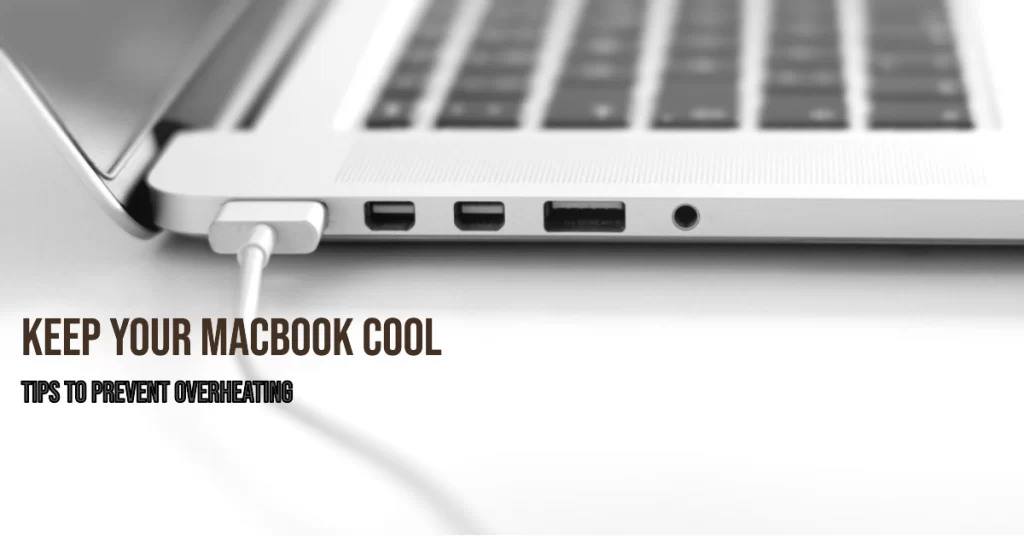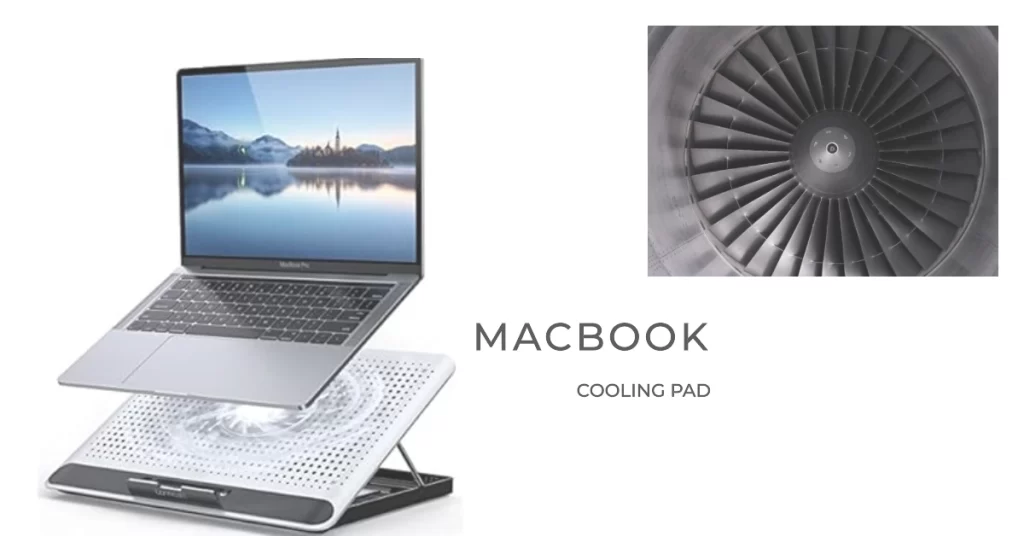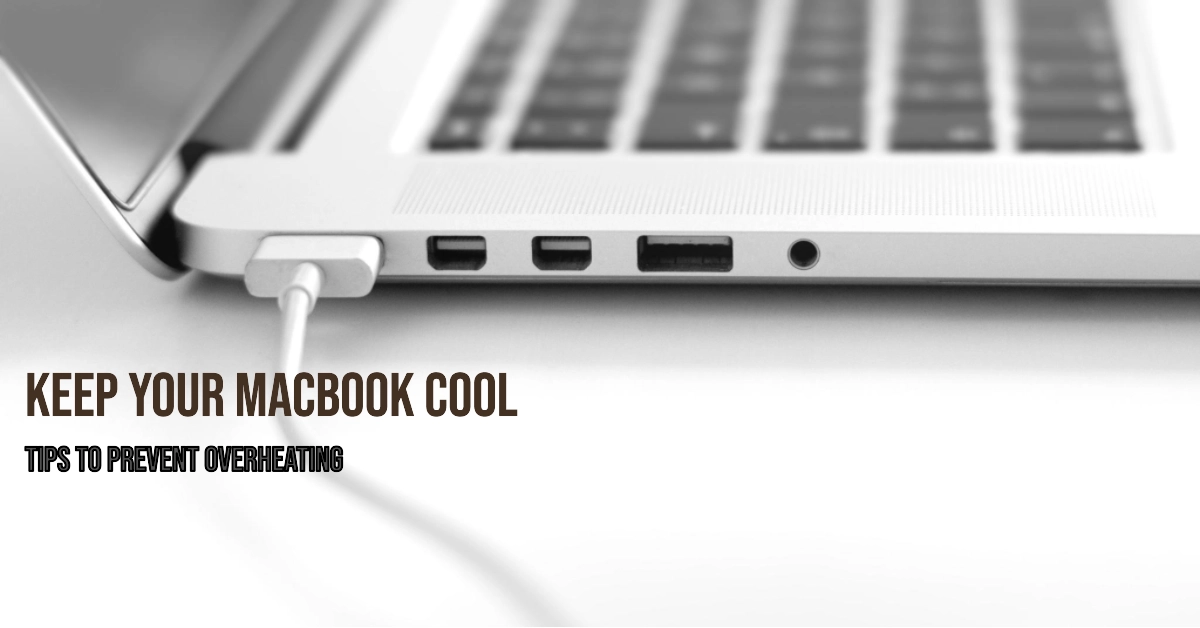Is your MacBook getting uncomfortably hot or even shutting down unexpectedly? Read on for tips to troubleshoot and fix overheating issues.

One of the most alarming things that can happen when using your MacBook is the device suddenly feeling extremely hot on the bottom or underside area. Perhaps the fans spin up loudly or the laptop shuts down unexpectedly to prevent heat damage.
While an overheating MacBook can seem dire, the situation is usually fixable through some simple troubleshooting steps you can perform yourself. Let’s examine what causes overheating on MacBooks and how to properly cool things down. With a few proactive maintenance habits, you can prevent excess heat from causing performance issues or damage.
What’s Making My MacBook Overheat?
Before we begin applying the given solutions, let’s try to identify what’s causing your MacBook to overheat. Some potential triggers for elevated temperatures on a MacBook computer include the following:
- Clogged air vents covered in dust restricting airflow
- Running processor-intensive apps like video editors or games
- Keeping MacBook on soft surfaces like beds that trap heat
- Updating macOS and apps which utilize more resources temporarily
Understanding the source of heat buildup guides the solution. Now, let’s go ahead and cool it down!
Troubleshooting an Overheating MacBook
Performing the following steps will help eliminate common factors that might have triggered your MacBook’s temperature to rise beyond normal level. Follow these tips to reduce concerning MacBook temperatures:
Step 1: Clean all air vents with compressed air to unblock them
Cleaning the air vents on your MacBook with compressed air is a simple and effective way to help prevent overheating and improve performance. It is recommended to clean the air vents on your MacBook every few months, or more often if you use it in a dusty environment.
To clean the air vents on your MacBook with compressed air, follow these steps:
- Turn off your MacBook and unplug it from the power adapter.
- Hold the can of compressed air upright and insert the straw into the air vent.
- Short, sharp bursts of air to blow out any dust or debris.
- Repeat steps 2 and 3 for all of the air vents on your MacBook.
- Once you have finished cleaning the air vents, turn your MacBook back on and plug it in.
Here are the benefits of cleaning all air vents on a MacBook with compressed air:
- Improved airflow: Dust and other debris can block the air vents, which reduces the amount of airflow to the internal components. This can cause the MacBook to overheat, which can lead to performance problems and even damage the hardware. Cleaning the air vents removes any obstructions, allowing air to flow freely and keep the MacBook cool.
- Reduced noise: A dusty MacBook fan will often make more noise than a clean one. This is because the fan has to work harder to keep the MacBook cool. Cleaning the air vents will remove any dust and dirt from the fan, which will reduce noise levels.
- Extended lifespan: Overheating can shorten the lifespan of the MacBook’s internal components. By keeping the MacBook cool, you can help to extend the life of your device.
Step 2: Quit any resource heavy apps to let computer cool down
Quitting any resource-heavy apps can help deal with overheating problems on a MacBook because these apps put a lot of strain on the MacBook’s CPU, GPU, and other components. This can cause the MacBook to generate more heat than it can dissipate, which can lead to overheating.
When you quit a resource-heavy app, you are essentially freeing up the MacBook’s resources so that they can be used by other apps and processes, or simply go to idle. This reduces the amount of heat that the MacBook generates, which can help to prevent overheating.
Some examples of resource-heavy apps include:
- Video editing apps
- 3D rendering apps
- Gaming apps
- Virtual machines
- Browsers with many tabs open
If you are experiencing overheating problems with your MacBook, try quitting any resource-heavy apps that you are not using. This can help to reduce the amount of heat that the MacBook generates and prevent overheating.
Step 3: Check Activity Monitor for runaway processes hogging CPU
Activity Monitor is a built-in macOS utility that allows you to monitor the performance of your Mac. It shows you information about all of the processes that are currently running on your system, including how much CPU and memory they are using.
If your MacBook is overheating, it is possible that there is a runaway process hogging CPU. A runaway process is a process that is using more CPU than it should. This can happen for a variety of reasons, such as a software bug or a malware infection.
To check for runaway processes in Activity Monitor, follow these steps:
- Open Activity Monitor.
- Click the CPU tab.
- Sort the processes by CPU usage.
- Look for any processes that are using a high percentage of CPU.
If you see any processes that are using a high percentage of CPU and you don’t recognize them, or if you know that they are not supposed to be using that much CPU, you can try to quit them. To quit a process, select it and click the X button in the toolbar.
If you are unable to quit a process, you can try to force it to quit. To force quit a process, open Activity Monitor, select the process, and press Command+Option+Escape.
Step 4: Set MacBook on hard flat surface to maximize airflow
When your MacBook is on a soft surface, such as a bed or couch, the air vents can be blocked, which reduces the amount of airflow to the internal components. This can cause the MacBook to overheat. Setting your MacBook on a hard, flat surface ensures that the air vents are not blocked and that air can flow freely.
Other benefits of setting the MacBook on hard flat surface:
- Better heat dissipation: Hard surfaces are better at dissipating heat than soft surfaces. This means that when your MacBook is on a hard surface, the heat generated by the internal components can be more easily transferred away from the device. This helps to keep the MacBook cool and prevent overheating.
- Reduced risk of damage: If your MacBook is on a soft surface, it is more likely to fall or be knocked over. This can damage the device and lead to overheating problems. Setting your MacBook on a hard, flat surface reduces the risk of accidental damage.
Step 5: Use an external cooling pad for additional airflow
An external cooling pad can help deal with overheating problems on a MacBook by providing additional airflow to the device. Cooling pads typically have one or more fans that blow air over the bottom of the MacBook. This helps to dissipate heat and keep the MacBook cool.
Cooling pads can be especially helpful if you use your MacBook in a hot environment or if you use it for demanding tasks that generate a lot of heat, such as video editing or gaming. Cooling pads can also be helpful if your MacBook’s internal cooling system is not working properly.
However, it is important to note that cooling pads are not a cure-all for overheating problems. If your MacBook is overheating regularly, it is important to identify the underlying cause of the problem and address it. This may involve cleaning the air vents, updating the software, or repairing the hardware.
Here are some of the benefits of using an external cooling pad for your MacBook:
- Reduces the risk of overheating: Cooling pads can help to keep your MacBook cool, which can reduce the risk of overheating and damage to the internal components.
- Improves performance: When your MacBook is cool, it can perform better. This is because the CPU and other components can run at higher speeds without overheating.
- Reduces noise: When your MacBook is cool, the fan does not have to work as hard, which can reduce noise levels.
- Extends the lifespan: Overheating can shorten the lifespan of your MacBook’s internal components. By keeping your MacBook cool, you can help to extend the life of your device.
If you are experiencing overheating problems with your MacBook, I recommend trying a cooling pad. Cooling pads are relatively inexpensive and easy to use. They can be a helpful way to reduce the risk of overheating and improve the performance and lifespan of your MacBook.

With better ventilation and inactive cooling time, an overheated MacBook should return to normal temperatures.
Adjust Mac Settings to Prevent Overheating
Proactive adjustments like these keep your MacBook running efficiently and cool. Here’s how:
- Reduce screen brightness to lower energy usage
- Disable unneeded app auto-launch and background processes
- Set Energy Saver mode to limit performance
- Keep macOS updated with latest optimizations
- Use external keyboard/monitor setup to reduce laptop heat generation
While an overheating MacBook can seem scary, through proper ventilation, software settings, and regular maintenance you can keep temperatures in check. Monitor usage habits, avoid blocking vents, turn down the processors as needed. With concerted effort, your MacBook will maintain comfortable temps for safe long-term operation.
Hope this helps!
